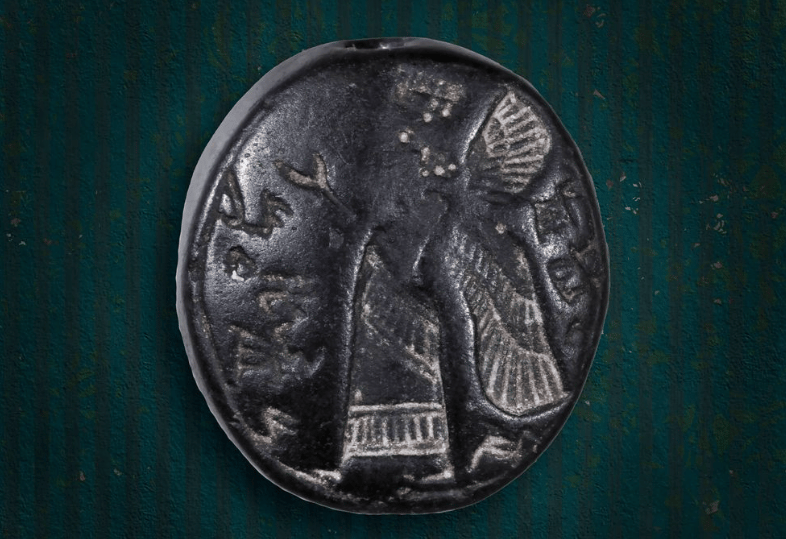Israel Antiquities Authority
RARE FIND: 2,700 years old stone seal discovered in Jerusalem
Rare 2,700-year-old seal bears both Hebrew script and Assyrian-style art, and offers new insights into First Temple period literacy and international influences.

Archaeologists have discovered a rare stone seal dating back to the First Temple period, approximately 2,700 years ago, near the Southern Wall of the Temple Mount in Jerusalem. The seal, found during excavations conducted by the Israel Antiquities Authority and the City of David organization, bears an inscription in ancient Hebrew and features a winged figure.
Dr. Yuval Baruch and Navot Rom, excavation directors for the Israel Antiquities Authority, described the black stone seal as "one of the most beautiful ever discovered in excavations in ancient Jerusalem" and noted its high artistic quality.
The seal served as both an amulet and a legal signature for its owner. It features a convex cut on both sides and a drilled hole for wearing as a necklace. The central image depicts a possibly royal figure in profile with wings, wearing a long, striped shirt and a crown or hat. The figure's arm is extended forward with an open palm. The inscription in paleo-Hebrew script reads "LeYehoʼezer ben Hoshʼayahu" (belonging to Yehoʼezer son of Hoshʼayahu).
Dr. Filip Vukosavović, an archaeologist and Assyriologist with the Israel Antiquities Authority, emphasized the rarity of the find, stating it's the first discovery of a winged 'genie' figure in Israeli and regional archaeology. Such figures were known in Neo-Assyrian art from the 9th-7th centuries BCE and were considered protective demons.
Researchers believe the seal originally belonged to Hoshʼayahu, a senior official in the Kingdom of Judah, and was later inherited and modified by his son Yehoʼezer. The object provides insight into the literacy levels and cultural influences of the period, showing both Assyrian artistic style and local Hebrew identity.
The discovery adds to the growing archaeological evidence of Assyrian cultural influence in the region, particularly in Jerusalem, during the late First Temple period. It also offers a glimpse into the international connections of the Kingdom of Judah administration 2,700 years ago.
Israeli Minister of Heritage, Rabbi Amichai Eliyahu, welcomed the find, stating it "opens another window for us into the days of the Kingdom of Judah during the First Temple period" and demonstrates Jerusalem's importance and centrality 2,700 years ago.
* Arutz Sheva contributed to this article.